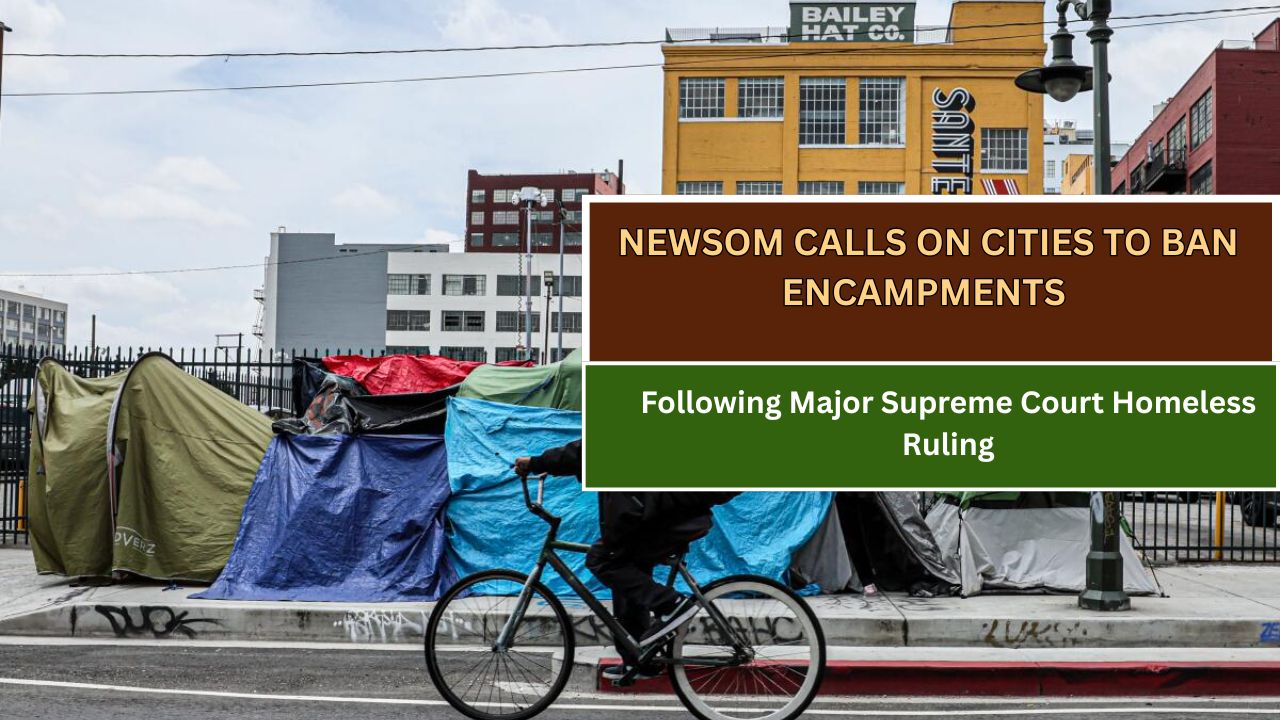California Governor Gavin Newsom is urging cities and counties across the state to adopt a tough new stance on homeless encampments, releasing a model ordinance aimed at cleaning up public spaces and enhancing safety. The move comes after a recent U.S. Supreme Court ruling that gave municipalities greater power to clear encampments, even if shelter is unavailable.
A Statewide Push to Regulate Encampments
Governor Newsom’s announcement on May 12, 2025, marked a significant shift in how California may approach its persistent homelessness crisis. His model ordinance proposes banning encampments on public property if they obstruct sidewalks, exist near schools or transit centers, or become permanent settlements. Individuals would be allowed to camp in one location for no more than three days, and cities must provide at least 48 hours’ notice before removals.
“We’re offering cities and counties a common-sense tool to address encampments responsibly and safely,” said Newsom, adding that the goal is to “restore order while offering services and shelter.” (SF Chronicle)
The model ordinance outlines that any action to remove people must come with a good-faith effort to connect them to housing or shelter alternatives.
Backing From a Supreme Court Ruling
Newsom’s move is bolstered by the 2024 U.S. Supreme Court decision in City of Grants Pass v. Johnson, which ruled in favor of local governments, affirming their right to restrict public camping—even when shelter options are limited. The decision reversed a prior Ninth Circuit precedent and opened the door for more aggressive encampment clearance policies.
Legal experts say the ruling gives states and cities clearer legal footing, though the implementation must still balance enforcement with civil rights protections.
State Financial Support on the Table
To help cities comply with the new guidance, Newsom announced that $3.3 billion in state funding will be available. These funds aim to expand housing availability, mental health care services, addiction treatment programs, and shelter infrastructure. Cities that align with the model ordinance and demonstrate meaningful efforts to assist unhoused individuals will be prioritized for funding.
Details on how to access these funds are expected to be released through the California Interagency Council on Homelessness (Cal ICH).
Local Governments Respond
Some California jurisdictions have already adopted similar measures or begun considering new ones. San Francisco, San Mateo County, and Oakland have either enforced existing bans more stringently or passed ordinances regulating encampments more aggressively.
In a statement, San Mateo County Supervisor David Canepa praised Newsom’s leadership: “Local governments have been crying out for a consistent strategy. This gives us both the legal cover and the resources to act.”
Pushback from Advocates and Residents
Despite the state’s intentions, the plan has met stiff opposition from homeless advocacy organizations. Critics argue that sweeping encampments without enough shelter capacity criminalizes poverty and leaves vulnerable individuals even more exposed.
“Clearing encampments without offering real housing is not a solution—it’s displacement,” said Jennifer Friedenbach of the Coalition on Homelessness San Francisco. “This will increase trauma and potentially violate constitutional rights despite the Supreme Court’s ruling.”
Some residents also voiced concerns about over-policing and a potential rise in displacement within suburban neighborhoods that lack shelters altogether.
Balancing Safety and Rights
The Governor’s office insists that the approach is not punitive but balanced.
“This isn’t about criminalizing homelessness,” said Jason Elliott, Newsom’s senior counselor on homelessness. “It’s about reclaiming public spaces while doing more to provide services and safe shelter.”
The plan encourages compassion-driven enforcement, emphasizing coordination with service providers, law enforcement, and community stakeholders.
A Long Road Ahead
California is home to nearly one-third of the nation’s homeless population, according to the U.S. Department of Housing and Urban Development (HUD). In 2024, over 180,000 Californians experienced homelessness on any given night. While this plan marks a new chapter in addressing the crisis, many experts believe it is just one part of a much larger puzzle.
Governor Newsom’s approach is expected to face legal scrutiny, political debate, and logistical challenges. But with homelessness continuing to dominate public discourse in California, the push for a standardized statewide framework may mark a turning point in the effort to bring people indoors and clean up public spaces.
This article has been carefully fact-checked by our editorial team to ensure accuracy and eliminate any misleading information. We are committed to maintaining the highest standards of integrity in our content.

Outside of work, he enjoys playing chess, following cricket, and writing short stories. His commitment to integrity and in-depth analysis strengthens OTE News’ mission of providing trustworthy journalism.



